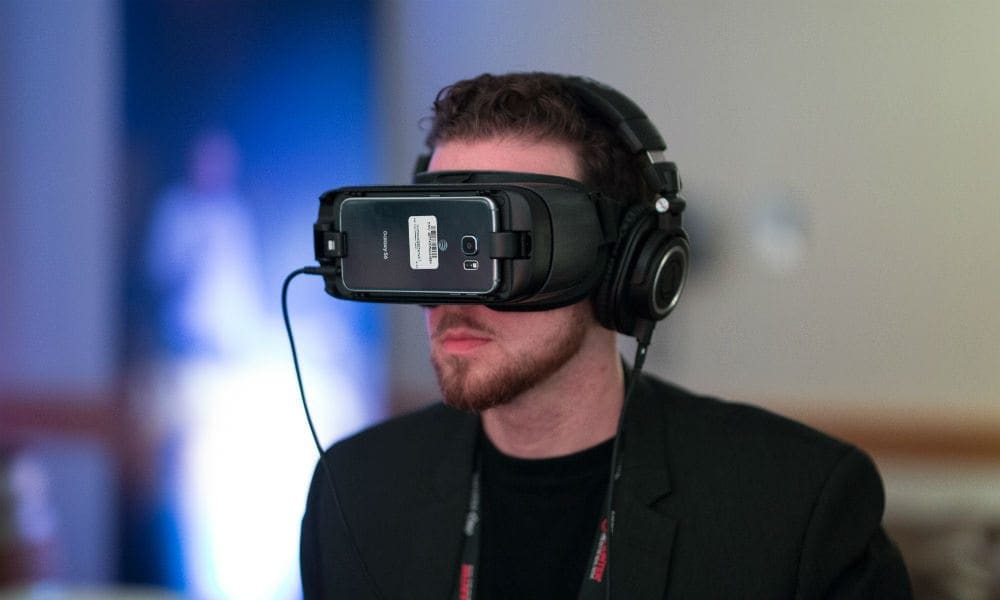Top trends from the Future Festival
By Jon E Worren | December 04, 2017

For new startups and ventures to succeed, a number of elements must fall into place. The exact elements and their level of importance is open to interpretation – and many people, especially past entrepreneurs, have firm opinions about what “makes or breaks” a startup and leads to its success.
Outsiders to the entrepreneurial space tend to overemphasize the value of a good idea, while insiders debate the value of the experiences and expertise that the founding team bring, the uniqueness of the technology, the efficiency of the business model and the attractiveness of the market space being targeted. While most of these factors are within an entrepreneur’s control, what they cannot control are the underlying economic, cultural, technological and political trends that occur throughout the lifecycle of their business.
Today, there is data suggesting that being “on trend” is the single most important factor in a venture’s success. In other words, the most important thing you can do as an innovator – whether you are starting something on your own or innovating in a corporate environment – is to ensure that your idea is supported by an underlying trend. We often hear from entrepreneurs who say their ventures failed because they “were too early” or “the timing wasn’t right”.
Three takeaways from the Future Festival
Recently, we attended one of the leading conferences for discovering new trends, the Future Festival – produced by Trend Hunter. Toronto is just one stop on the Future Festival’s list of global destinations. It focuses predominantly on consumer trends but, unlike many trendsetting conferences, it goes way beyond changes in technology.
What were the most interesting trends for Canadian ventures?
- AI (no surprises here): Canada’s leadership in artificial intelligence research has brought the spotlight to our country, and in particular Toronto, Montreal and Edmonton, in a new way. AI is expected to transform many areas, primarily by augmenting complex and information-rich processes for humans. The emergence of the self-driving car is predicted to be one of the biggest changes AI will bring. In turn this will impact upon many different areas of the economy – from insurance, to transit, to health and real estate.
- Hybridization: Technology is integrating more closely with our day-to-day lives, facilitating a range of new business models, products and services. One area of particular promise is increased access to our own health data through smart devices. A range of new health and wellness ventures are looking to capitalize on the opportunities created through the insights fuelled by this data.
- Experiences: This frontier is not about creating things, but creating experiences. Integrating online and offline transactions is becoming paramount. Examples include Amazon buying Whole Foods or Warby Parkers’ efforts at facilitating ecommerce.
These are just a few of the trends that ventures should be watching out for in the coming months. Of course, focusing on underlying trends doesn’t result in automatic successes for companies in any given space. The onus is on founders to identify opportunities and attach themselves to rising tides. A trend often reflects a strong shift in values or consumer spending and new trends are frequently accompanied by unique language and imagery.

Case study – the craft beer industry
Let’s take the global trend towards craft beer as an example. It’s produced a whole new awareness around local brewing traditions and ingredients. Suddenly consumers care about whether or not a beer is “hoppy” or “fruity”, or whether it’s made with 150-year-old yeast or the mildly smokey oats from a farm nearby. Language and values that have been absent from global beer brands’ vocabulary are now in fashion. Craft brews also have unique labels and bottle designs – elements that help differentiate them from mainstream beers.
Founders and entrepreneurs that understand the underlying trends that support their markets need to assess any new language or design elements, before adopting and integrating them into their own products and marketing materials in a careful manner. If they’re used in the wrong manner – where perhaps the product offering doesn’t quite match the promise of the language – the tone and word choices will feel clichéd, triggering negative responses. Everything has to be authentic – another important trend identified by Trend Hunter.
So, while mainstream beer producers increasingly have co-opted much of the craft beer vocabulary, it often falls flat, despite the fact that they have the luxury of having the best agencies working on their behalf. I believe this is because their efforts sometimes lack real meaning and purpose. Innovators that want to change the world take ownership of the changes they want to achieve. That gives them authenticity and purpose. If you are just being opportunistic and jumping on a trend for the purpose of exploiting the trend, it can be fairly transparent.
Case study – Dove
Big brands often occupy many different market positions, making it difficult, but not impossible, to push new trends. Dove, for instance, while at times stumbling, has done well in promoting better body image for women by using models of all shapes, age groups, colours and sizes in their marketing as part of their “Real Beauty” campaign. The initiative, which began over a decade ago, was triggered by a new understanding of how their target market perceived “beauty”. Dove’s leadership on that issue has generated brand exposure way beyond the advertising they paid for and was mostly very positive. For Dove, the success of the campaign has been driven by positive intent combined with appropriate responses to the conversation it has generated.
In other words, trends create opportunities for both new brands and longstanding corporations, but blindly jumping onto a new trend can be negative rather than positive. The many ventures that claim to be in “AI” should keep that in mind – your brand has to go beyond the superficial.
 Jon E Worren
Jon E Worren